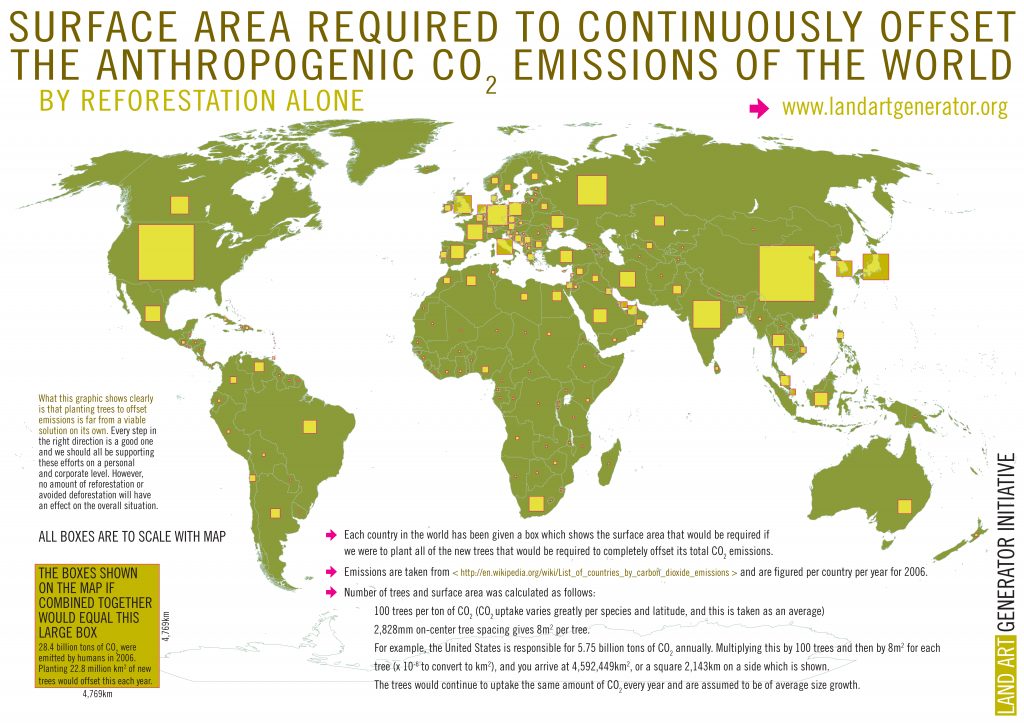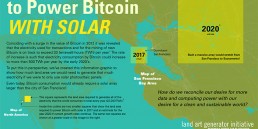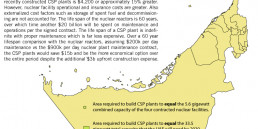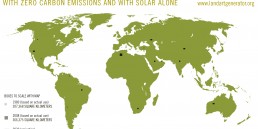
What the graphic shows clearly is that planting trees to offset emissions is far from a viable solution. Projects that offset carbon emissions are certainly beneficial and should be applauded. Every step in the right direction is a good one and we should all be supporting these efforts on a personal and corporate level. However, no amount of reforestation or avoided deforestation will have an effect on the overall situation. The numbers that we used are based on United Nations statistics and are located here. You’ll notice interestingly they do not include carbon emissions from deforestation but only from human fossil fuel combustion. For each country, the number of tons per year was used in the following equation to arrive at the square km area for that country:
Country’s Annual Carbon Emissions in Tons x 100 trees per ton x 8 square meters per tree x 10[-6] conversion = area in square kilometers
The figure of 100 trees to offset each ton of carbon emissions is the most critical and yet most uncertain of the variables. The complicating factors can be understood by seeing this and this and this just to pick a few. My reasoning is that we have seen figures that range from 40-80 trees per ton per year and I’ve seen suggestions that each tree can absorb 1 ton of carbon over its lifetime. It depends greatly on the species and the latitude in which they are planted (trees nearer the equator are more efficient at carbon uptake on average). Assuming that the trees are planted as large saplings, they will take time to reach their full potential, so for the purposes of this overview, an average of 100 trees per ton per year seemed like a good average.
It is interesting to compare this graphic with the similar graphic of the surface area required to fuel the world with solar power.
As the world prepares for Copenhagen on December 7th, we should all get it clear in our heads that the magnitude of the problem is such that we can not hope for easy solutions. What is required is a massive and centralized effort if we are to meet the 2°C maximum target. This article in Science Daily is a good read.
The study also shows that, if all conservatively estimated available fossil fuels were to be burnt, two to three times more CO2 than allowed for the 2°C target would be emitted. This only takes into account the fuels which are already known and which are economically viable to extract. The fossil fuels will therefore not run out before the maximum CO2 emission calculated by scientists is reached. If we continue to use them, this must take place in combination with effective technologies which capture the CO2 and extract it from the atmosphere.
Related Posts
3 Comments
Leave a Reply to Diesel Generator Emissions Calculation | diesel generator Cancel reply
This site uses Akismet to reduce spam. Learn how your comment data is processed.




[…] Art Generator Initiative source diesel […]
Hello
I find your series “Surface Area Required…” really clear and interesting. But is there a reason why Germany is still divided in two states in the last poster? This does not matter, of course, for the area for afforestation, in any case germany don’t have enough space ;-).
Best regards,
Jocelyne Senf
Thanks Jocelyne. I’ve taken down the wall. Of course it was just an old map… 🙂